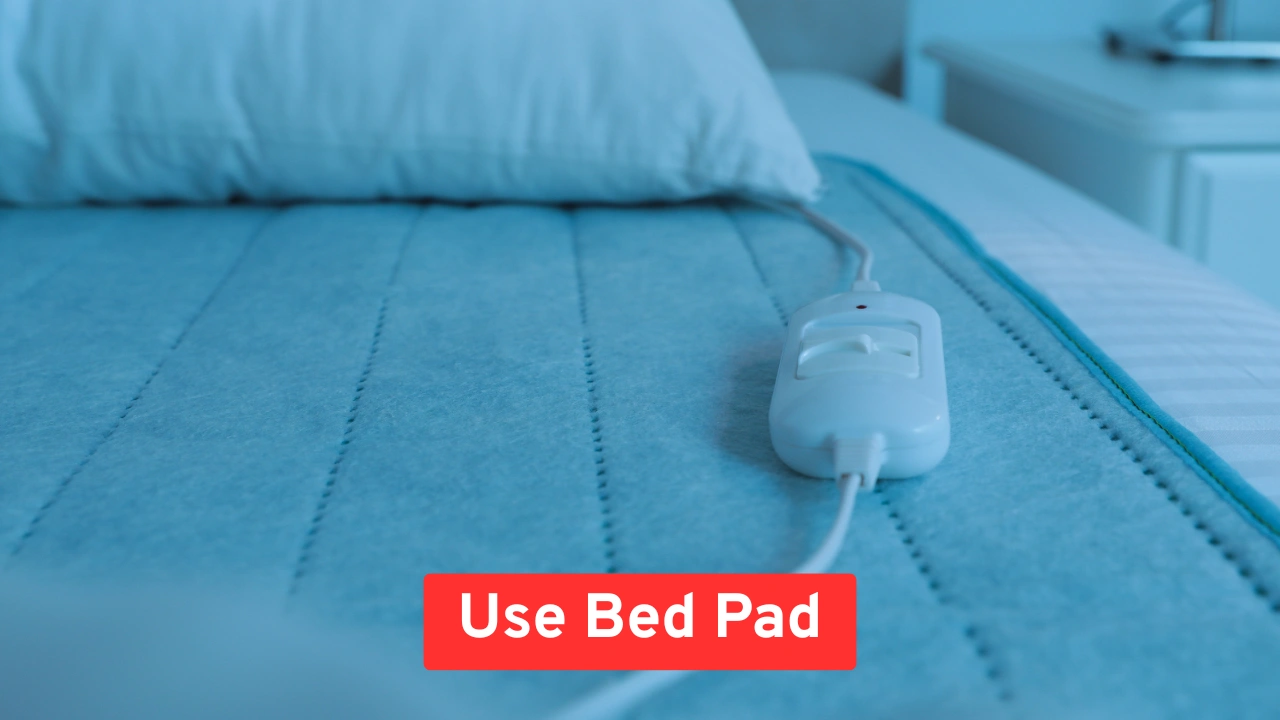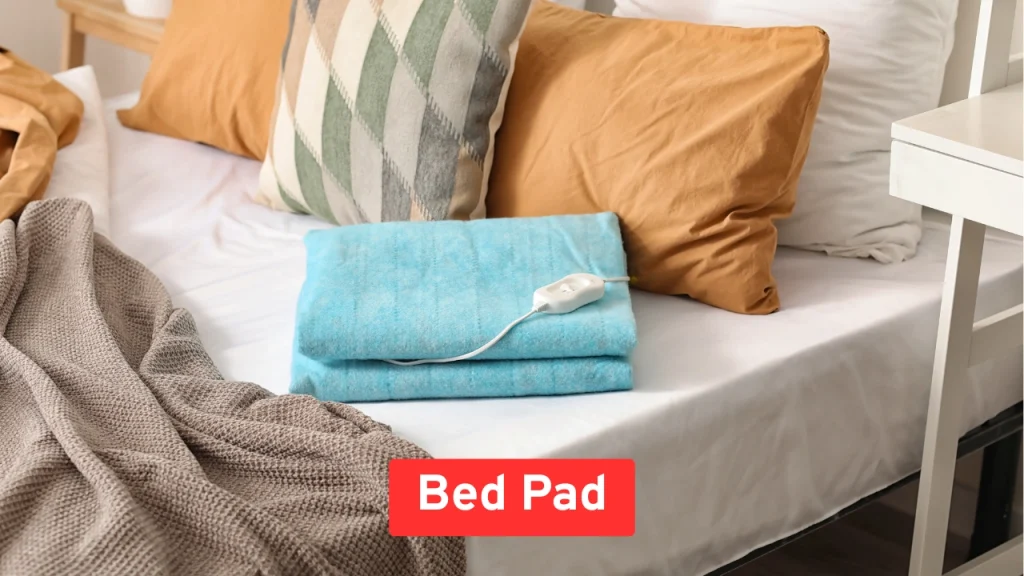If you’ve ever had to care for someone who spends a lot of time in bed, you know how hard it is to keep the bed dry and clean. A bed pad is a simple and smart solution that helps protect mattresses from getting wet or stained. These pads are useful in hospitals, homes, and nursing centers.
A bed pad is like a soft mat that goes on top of the bed sheet or mattress. It can absorb moisture and stop it from reaching the bed. This is especially helpful for people who have accidents at night or can’t get out of bed quickly. Many families and caregivers use them to make life easier and more hygienic.
Read More About fok959s-m model and bed models here fok959s-m model
What Is Bed Pad?
A bed pad is a soft, absorbent layer placed on a bed to protect the mattress from moisture, spills, or accidents. It is often used for people with incontinence, limited mobility, or medical conditions that require extra care during sleep. The pad helps keep the bed dry and comfortable throughout the night.
Most bed pads have three layers: a soft top for comfort, a middle layer for absorbing liquid, and a waterproof bottom. They come in both disposable and reusable types, making them suitable for short-term or long-term use. These pads are especially helpful in homes, hospitals, and nursing care centers.
Understanding the Purpose of a Bed Pad
A pad is not just a sheet or cover; it is specially made to protect against wetness. The main goal is to soak up urine, sweat, or spills so the mattress stays dry. That keeps the bed more comfortable and helps prevent skin rashes or infections.
People who are sick or old often have trouble holding their bladder. Children who wet the bed may also need one. A good pad gives peace of mind to both the user and the caregiver. It allows for better sleep without the fear of ruining the mattress.
Also Read: Double Bed The Perfect Fit for Your Sleep Style
Different Types of Bed Pads Available
Not all bed pads are the same. There are different types made for different needs. Some are for one-time use, while others can be washed and used again. Each kind has its own benefits, depending on your situation and budget.
Below is a table to help you understand the main differences:
| Type | Description | Best For | Reusable? |
|---|---|---|---|
| Disposable Bed Pad | Single-use, throw away after soiling | Hospitals, travel, short-term use | No |
| Reusable Bed Pad | Washable and eco-friendly | Long-term care, home use | Yes |
| Waterproof Bed Pad | Has a waterproof layer underneath | Heavy incontinence, deep sleep | Depends |
| Quilted Bed Pad | Soft top layer, often cotton or fleece | Comfort and moderate protection | Yes |
A pad should be chosen based on how much protection is needed. If the person leaks a lot at night, you may want one with high absorbency. For lighter needs, a thinner one might work just fine.
What Materials Are Used in a Bed Pad?
A good pad usually has several layers to do its job well. The top layer is soft and comfy, so it feels nice against the skin. This layer might be made from cotton or microfiber. The middle layer absorbs liquid and holds it in, while the bottom layer is waterproof to stop leaks.
Some bed pads also have a non-slip backing to keep them in place during the night. This is very helpful for people who move a lot in their sleep. If a bed pad moves around too much, it won’t offer full protection.
Who Should Use a Bed Pad?
There are many groups of people who can benefit from using a bed pad. It’s not just for old people or patients in hospitals. It’s a helpful item for anyone who might wet the bed or sweat a lot during sleep.
People who may need a bed pad include:

- Seniors with bladder issues
- Children who wet the bed
- People with disabilities or limited mobility
- Patients recovering from surgery
- Pregnant women in their final trimester
Using a bed pad doesn’t mean someone is weak or sick. It simply makes life cleaner, easier, and more comfortable for both the person and the caregiver.
How to Use and Care for a Bed Pad?
Using a bed pad is simple. Just place it on top of the sheet or mattress, usually under the person’s hips or bottom. Make sure it is flat and smooth so it feels good and works well. If the pad is too small or folded, it won’t catch all the moisture.
For reusable bed pads, it’s important to wash them correctly. Use warm water and a mild detergent. Don’t use bleach, as it can ruin the waterproof layer. Dry the pad on low heat or air dry to make it last longer.
If you’re using a disposable pad, just throw it away after one use. These pads are good for travel or when you don’t have time to do laundry. They are also common in hospitals or nursing homes.
Also Read: Sofa Bed The Best Space-Saving Solution for Small Homes
Why a Bed Pad Is Better Than Just a Towel?
Some people try to use towels instead of a bed pad, but towels are not as effective. Towels can soak up some moisture, but they won’t hold much. They also don’t have a waterproof backing, so the liquid still reaches the mattress.
A towel also moves around a lot during sleep. It may bunch up and feel uncomfortable. A pad is designed to stay in place and soak up more liquid. It is made for this exact purpose and works much better.
Benefits of Using a Bed Pad
There are many clear benefits to using a bed pad every night or during care. It makes life easier and reduces stress for caregivers. Here are some key benefits:
| Benefit | Description |
|---|---|
| Protects the mattress | Keeps it dry, clean, and safe from damage |
| Improves sleep comfort | Keeps the bed surface dry and soft all night |
| Saves time and energy | Less laundry and fewer bed changes |
| Helps prevent skin problems | Stops rashes, infections, and sores caused by wet bedding |
| Eco-friendly option | Reusable pads are better for the environment |
Many users report better sleep and less worry when they use a bed pad regularly. This is true for both kids and adults who need extra support at night.
What to Look For When Buying a Pad?
If you’re shopping for a bed pad, there are a few things you should keep in mind. Size matters a lot. Make sure the pad is wide enough to cover where the person sleeps. You also want to check how much liquid it can absorb.
Look for a bed pad with a soft top and a strong waterproof backing. It should also be easy to wash or throw away, depending on the type. If you plan to use it every night, a reusable pad might save you money in the long run.
Some people also look for pads that match the bed’s color or style. While this isn’t required, it can make the bed look nicer and more natural.
Where to Buy?
You can find a bed pad at most stores that sell health care or bedding items. Many people buy them from medical supply stores, drugstores, or online marketplaces like Amazon or Walmart. Online reviews are helpful because they tell you how well a pad works in real life.
Buying a bed pad online also gives you more choices in size, color, and material. You can compare brands and prices to get the best deal. Just make sure to check return policies in case the pad doesn’t work for you.
Also Read: Single Bed Styles That Combine Comfort and Storage
Conclusion
A bed pad is a simple but powerful product. It offers protection, comfort, and peace of mind for anyone who needs extra support in bed. Whether for short-term recovery or long-term care, it is a smart and practical choice.
This helpful item is not only for the sick or elderly. It’s for anyone who wants to sleep dry, feel clean, and avoid mattress damage. A good bed pad makes daily life easier and safer, both for the user and for the caregiver.




